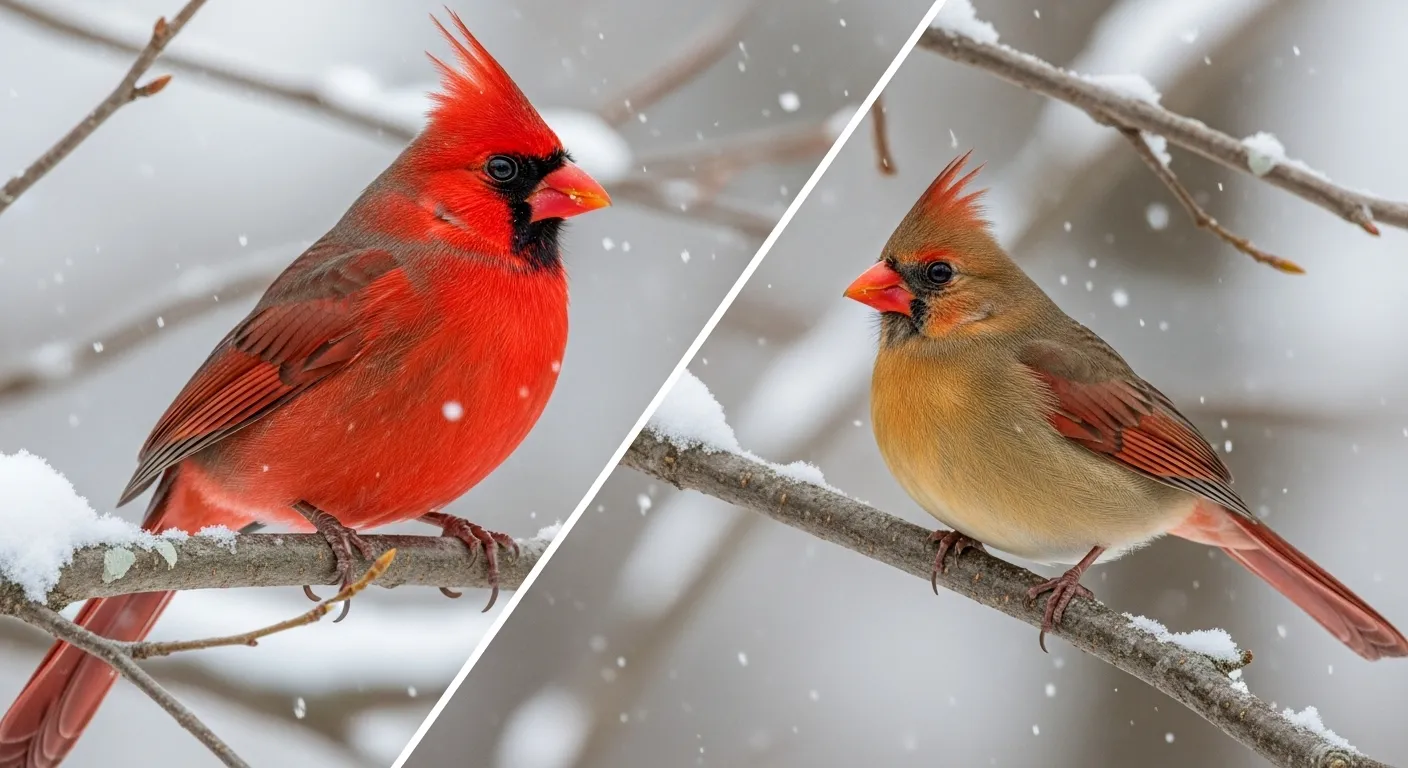
A Guide to the Most Common Backyard Birds Across the U.S.
While every state has its own unique mix of avian residents, many species are widespread and familiar visitors to feeders and gardens across the country. Learning this core group of backyard birds will build a strong foundation for your birdwatching journey. Here we profile a few of the most common and recognizable species you are likely to encounter. Remember to consult a local field guide or an online resource like the National Audubon Society guide for birds specific to your region.
The Northern Cardinal (Cardinalis cardinalis)
Identification: The male Northern Cardinal is unmistakable—a brilliant, crimson-red bird with a pointed crest and a thick, cone-shaped, orange-red bill. A neat black mask surrounds his face. The female is more subtle but equally beautiful, with a warm, olive-brown body, hints of red on her crest, wings, and tail, and the same distinctive bill. They are about 8-9 inches (20-23 cm) long, a bit smaller than a robin.
Ecology and Behavior: Cardinals are non-migratory, meaning you can enjoy their vibrant color year-round. Their diet consists mainly of seeds, fruits, and insects. Their strong beaks are perfectly adapted for cracking open seeds, making them frequent visitors to backyard feeders. You’ll often hear their loud, clear, whistling songs, which they sing from high perches to defend their territory.
The American Robin (Turdus migratorius)
Identification: One of the most familiar birds in North America, the American Robin has a dark gray back, a warm orange-red breast, and a dark head with a broken white eye-ring. Its bill is yellow. Robins are about 10 inches (25 cm) long. While many think of them as a sign of spring, many robins stay in the northern U.S. through the winter, gathering in flocks and feeding on berries.
Ecology and Behavior: The classic image of a robin is of it hopping across a lawn, head cocked, listening for earthworms. They are members of the thrush family, and their diet is a mix of invertebrates and fruit. Their song is a cheerful, caroling series of rising and falling phrases, often one of the first bird songs heard at dawn.
The Blue Jay (Cyanocitta cristata)
Identification: A large, noisy, and intelligent bird, the Blue Jay is a mix of brilliant blue, white, and black. It has a prominent blue crest on its head, a black “necklace” on its throat, and a bold pattern of black and white on its blue wings and tail. They measure 10-12 inches (25-30 cm) long.
Ecology and Behavior: Blue Jays are part of the corvid family, which also includes crows and ravens. They are known for their intelligence and complex social systems. Their diet is varied, including nuts, seeds, insects, and occasionally the eggs or nestlings of other birds. They are famous for their loud, raucous “jay! jay!” calls but can also make a surprising variety of other sounds, sometimes even mimicking hawks.
The Black-capped Chickadee (Poecile atricapillus)
Identification: This tiny, energetic bird is a backyard favorite. It has a distinctive black cap and “bib,” bright white cheeks, a soft gray back, and a buff-colored wash on its sides. Chickadees are small, only about 5 inches (13 cm) long. Their namesake “chick-a-dee-dee-dee” call is a common sound in woodlands and backyards.
Ecology and Behavior: Chickadees are incredibly acrobatic, often seen hanging upside down from branches or feeders to grab a seed. They eat insects, seeds, and berries. They are also known for caching food, hiding thousands of seeds in tiny crevices to retrieve later. In the southeastern U.S., you’re more likely to see the very similar Carolina Chickadee, which is best distinguished by its subtly different song.
The House Finch (Haemorhous mexicanus)
Identification: The male House Finch has a rosy red-to-orange head and upper breast, with brownish, streaky wings and back. The red color is often described as looking like it was “dipped in” paint. Females are plain, grayish-brown birds with blurry streaks covering their bodies. Both have a conical, seed-eating bill.
Lookalike Mini-Example: The House Finch is often confused with the Purple Finch. The key difference is in the male’s color pattern. The red on a male House Finch is concentrated on the head and chest, with a distinctly brown, streaky belly and flanks. A male Purple Finch looks as though it was completely “soaked in raspberry juice,” with the color extending down its back and flanks, and its belly is typically clean white, not streaky.
The Downy Woodpecker (Dryobates pubescens)
Identification: North America’s smallest woodpecker, the Downy is a compact bird with a black and white checkered pattern on its back, a white belly, and a black and white striped head. Males have a small patch of red on the back of their head. They are about 6.5 inches (17 cm) long.
Lookalike Mini-Example: The Downy Woodpecker has a near-identical-looking but larger cousin, the Hairy Woodpecker. The most reliable field mark to tell them apart is the bill. The Downy Woodpecker has a tiny, almost dainty bill that is much shorter than the length of its head. The Hairy Woodpecker has a formidable, chisel-like bill that is nearly as long as its head. This difference gives the Downy a “cuter” appearance and the Hairy a more robust, powerful look.
The Mourning Dove (Zenaida macroura)
Identification: This slender, graceful bird is a soft, grayish-tan color overall with a few black spots on its wings. Its most distinguishing features are its long, pointed tail and small head. When they take flight, their wings produce a sharp, whistling sound.
Ecology and Behavior: Mourning Doves are one of the most widespread birds in North America. You’ll often see them foraging for seeds on the ground, frequently beneath bird feeders. Their call is not a “hoot” like an owl’s, but a soft, melancholy coo that sounds like “oo-oo, ooo, ooo, ooo,” often mistaken for an owl by beginners.















